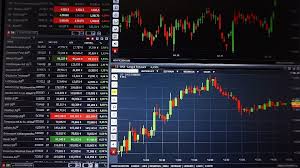
In the fast-paced world of forex trading, utilizing the right tools is essential for success. One of the most valuable resources available to traders is trading signals forex Trader APK. These signals can significantly enhance a trader’s ability to make informed decisions, manage risk, and maximize profits. In this article, we will explore the ins and outs of forex trading signals, including their types, sources, and strategies for effective use.
What are Forex Trading Signals?
Forex trading signals are indications that inform traders about potential trading opportunities in the foreign exchange market. These signals are generated based on a variety of factors, including technical analysis, fundamental analysis, market news, and even the sentiment of other traders.
Types of Forex Trading Signals
There are two main types of forex trading signals: manual signals and automated signals.
1. Manual Trading Signals
Manual trading signals are typically provided by experienced traders or analysts who analyze the market and share their insights. These signals may come in various formats, including emails, SMS alerts, or on trading platforms. Manual signals often come with detailed explanations, including the reasons behind the suggested trade, entry and exit points, and stop-loss levels.
2. Automated Trading Signals
Automated trading signals, on the other hand, are generated by algorithmic systems or trading robots. These systems analyze market data continuously and provide traders with real-time signals based on pre-defined criteria. Automated signals are popular among traders who prefer a hands-off approach to trading.
Sources of Forex Trading Signals

The sources of forex trading signals can vary significantly. Here are some of the most common sources:
1. Professional Analysts
Many financial institutions and trading firms employ professional analysts who analyze market trends and release trading signals based on their expertise. These analysts use technical indicators, chart patterns, and fundamental data to inform their signals.
2. Trading Platforms
Most trading platforms offer built-in tools and features that can generate signals for traders. These platforms may use technical analysis algorithms to identify potential trade setups or highlight key support and resistance levels.
3. Social Trading Networks
Social trading networks allow traders to connect and share their insights and trading ideas. Traders can follow successful traders’ signals and replicate their trades, gaining insight from those with more experience in the market.
4. News and Economic Calendars
Market-moving news events, such as interest rate changes, employment reports, or geopolitical developments, can trigger trading signals. Many traders monitor economic calendars to stay updated on upcoming events that may impact currency prices.
How to Use Forex Trading Signals Effectively
Using forex trading signals can significantly improve your trading results, but it’s essential to approach them with a well-thought-out strategy. Here are some tips for using forex trading signals effectively:

1. Verify the Source
Before acting on any trading signal, it’s crucial to verify the credibility of the source. Check the track record of the analyst or the reliability of the trading platform. Look for reviews or testimonials from other traders to ensure the signals are worth following.
2. Combine Signals with Your Analysis
While trading signals can be helpful, it’s advisable to combine them with your analysis and research. Use your knowledge of technical and fundamental analysis to validate the signals and determine whether they align with your trading strategy.
3. Risk Management
Always have a risk management plan in place when trading based on signals. Determine your risk tolerance and set stop-loss orders to protect your capital in case a trade doesn’t go as expected. Proper risk management can prevent significant losses and ensure long-term success.
4. Keep Track of Your Performance
Maintain a trading journal to track your performance based on the signals you follow. Analyze which types of signals work well for you and which do not. This information can help you refine your trading strategy and make more informed decisions in the future.
Conclusion
Forex trading signals can be an invaluable resource for traders looking to enhance their market analysis and improve their trading outcomes. By understanding the different types of signals, their sources, and effective strategies for their use, you can leverage this tool to boost your trading performance. Remember always to do your due diligence, combine signals with your analysis, and maintain effective risk management practices. With the right approach, forex trading signals can significantly increase your chances of success in the highly competitive forex market.
No responses yet